
The tale of Atlantis, the fabled sunken city, is well-known and has spawned numerous myths that have piqued the interest of adventurers, explorers and treasure hunters throughout history. Despite extensive searches, Atlantis has never been located, and its existence remains a mystery. However, the story of Baiae, a lost Roman city that was submerged for almost 2,000 years and rediscovered, is entirely factual. Researchers have captured images of countless statues, objects and even buildings that have been preserved on the sea floor. In this article, we will explore what life was like in Baiae, why the city sank, and its rediscovery by explorers.
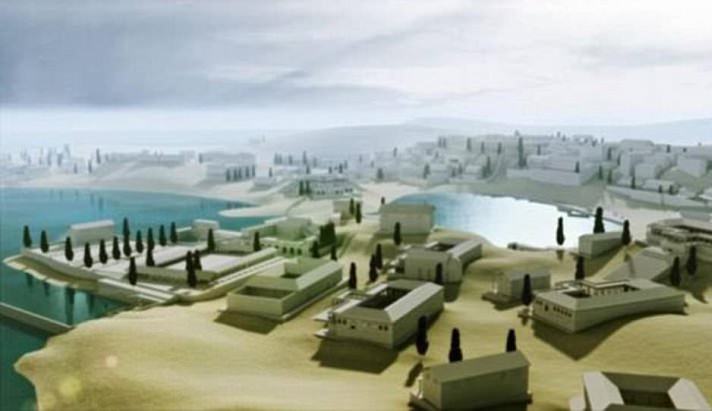
The ancient city of Baiae, which served as an amusement destination for the wealthy inhabitants of Rome, was located in an area prone to volcanic activity. The sinking of the Baiae coastline led to the city's submersion in the sea, where it remained for approximately 1,700 years. The remains of the city were discovered in the Gulf of Naples in present-day Italy. The city's history is on the brink of being forgotten.
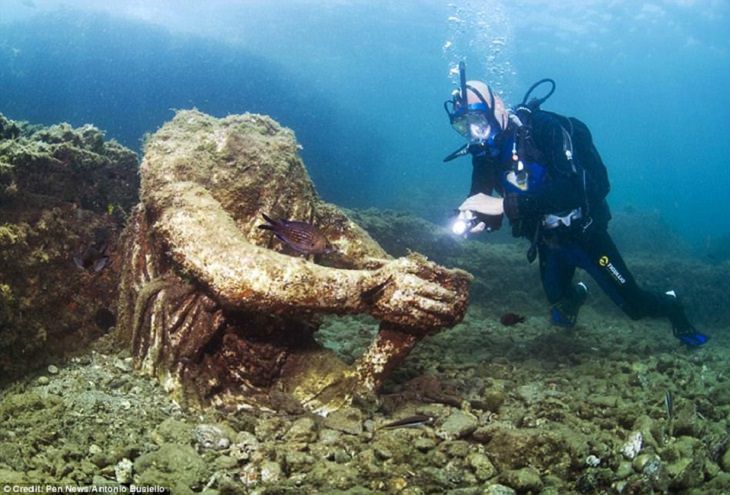
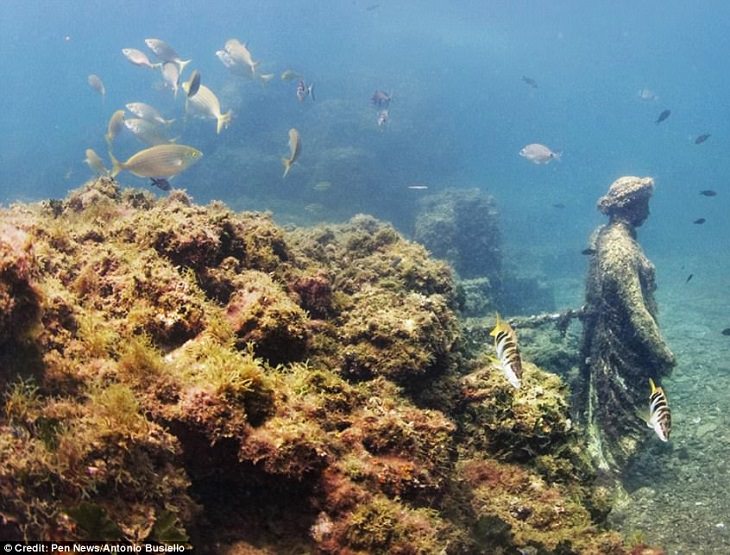
One particularly fascinating aspect of Baiae is the existence of its ancient Roman thermal baths. Many Roman elite visited Baiae specifically for these baths, which were thought to have healing properties due to the volcanic nature of the region. The city was home to numerous luxurious bath complexes, some of which remain remarkably well-preserved underwater.
Moreover, Baiae was known for its so-called "Emperor's Palace," a massive complex that was allegedly the property of several Roman emperors. The palace is believed to have been an architectural marvel, featuring grand villas, terraces, and gardens. Its remains are part of the underwater archaeological park that can be visited today.
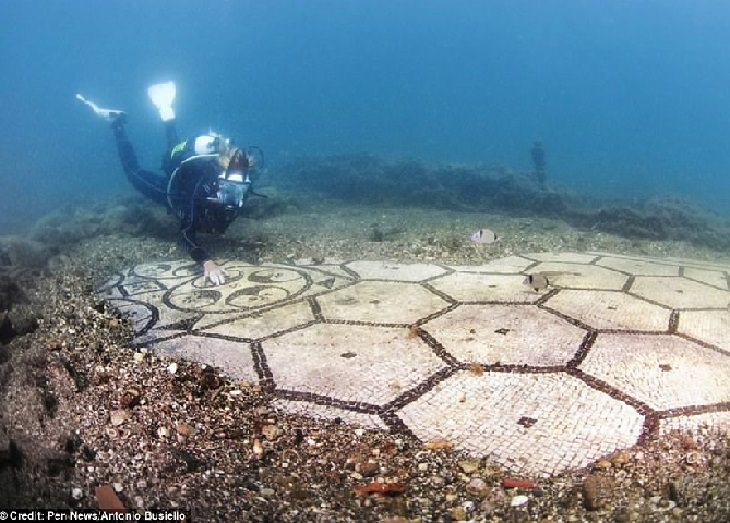
Many historians believe that Baiae was named after Baius, who served as the helmsman on Odysseus' ship in the renowned story of "The Odyssey" by Homer. It was a trendy place, but also infamous for corruption and troublemaking. The city was a hub of pleasure and luxury that attracted the wealthiest and most respected people of the time, much like the modern-day "Las Vegas." During its peak, eminent historical figures from the Roman Empire era, including Nero and Hadrian, frequented the city. Gnaeus Pompeius Magnus, a statesman and general, and even Julius Caesar, who owned opulent residences throughout the city, also visited it often.

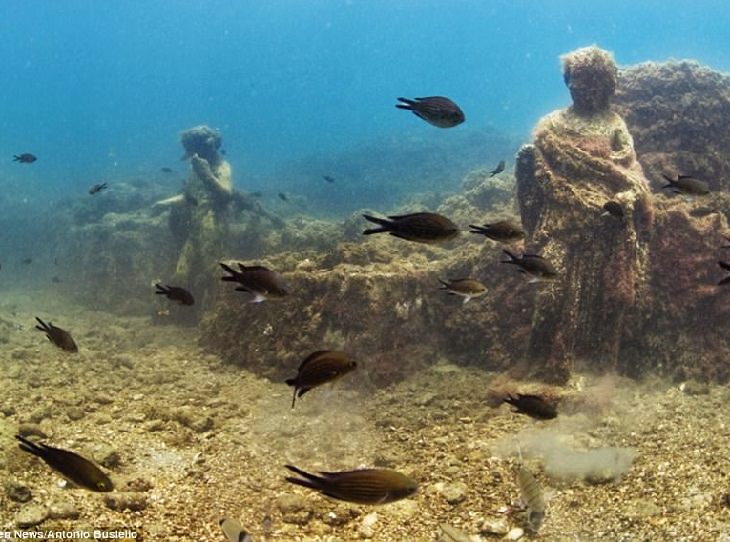
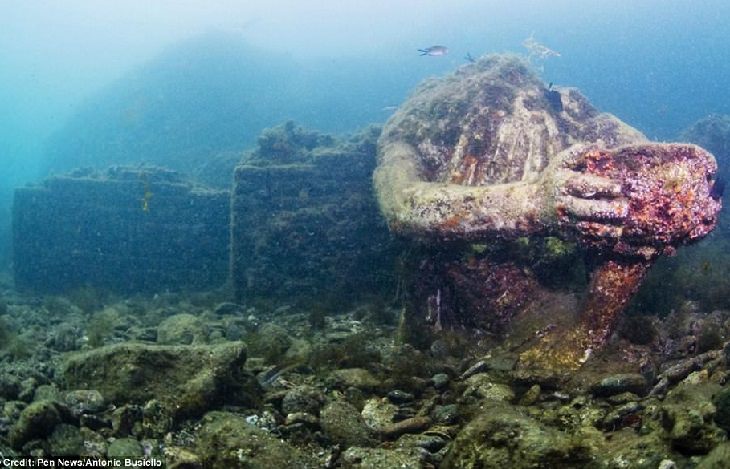
Fortunately, despite the passage of time, a significant portion of the city has survived and has been preserved impeccably. These include roads, statues, mosaic floors, and various objects. Antonio Boscialo, a diver residing in Naples, captured these relics in his photographs during the diving expedition that explored the sunken city. One of the most notable discoveries was the estate of Gaius Calpurnius Piso, a friend of Emperor Nero who conspired to kill him secretly in order to take over his throne and the empire. Unfortunately for Piso, the emperor learned of his plot, and it was thwarted.
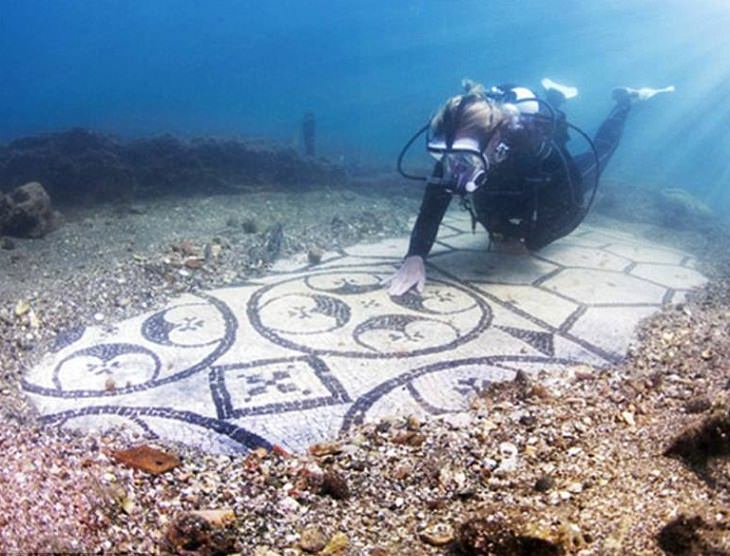
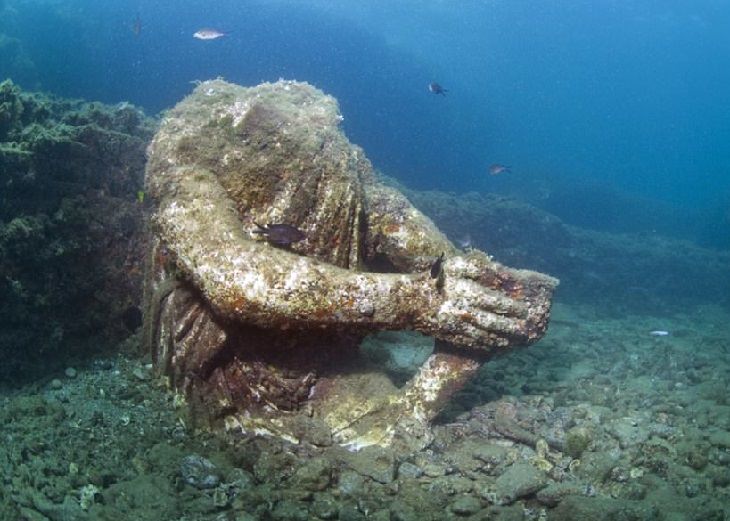
Watch this video of divers visiting the ancient ruins:
The city of Bahia may have had its peak in the past, but its rediscovery has brought attention to its rich history and the way of life of its people. Despite its sinking and disappearance, its captivating tale will endure and captivate the minds of many, especially history enthusiasts. This story will remain a source of fascination and curiosity for generations to come.
Photos source: Daily Mail Online
 16:32
16:32
A Short Lesson in New York's Architectural History
There's no city that can compare to New York's architecture. Let's dive into it.
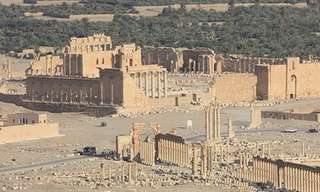
9 Ancient Cities Your History Teacher Never Told You About
The world's history is filled with many civilizations that rose and fell, leaving behind ancient cities and a final monument to their legacy. You may have heard of some, but these cities are less-known, yet still as amazing.
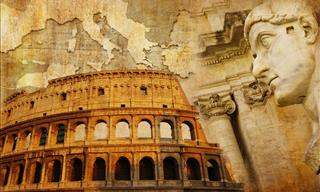
Trivia Quiz: 12 Questions About Ancient Rome!
This trivia quiz has 12 questions about the ancient Roman Empire, starting easy but getting much harder towards the end.

These Photos Prove You Can Never Know What Lies Underwater
9 amazing sites that were once lost to the waters of lakes and rivers, only to emerge many years later...
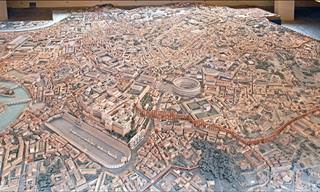
This Is What the City of Rome Looked Like 1700 Years Ago
A full model of the ancient city of Rome that took 36 years to complete
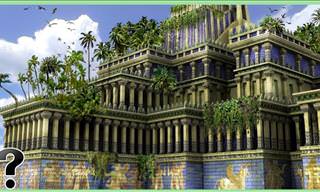 5:03
5:03
The Lost Seventh Wonder of the World, the Hanging Gardens
We have ample evidence for all of the ancient seven wonders of the world, except for one: the Hanging Gardens of Babylon. Did it exist?

Older Characters Steal the Show in These Brilliant Films
Here are ten unforgettable films where older characters take the lead in extraordinary ways.

12 Beautiful Facts About the Charming Act of Kissing
Such interesting facts about the act of kissing...

10 English Words That Come From Native American Languages
Some seemingly ordinary English words, such as barbecue, raccoon, and even squash, actually come from Native American languages and it's fascinating!
 12:52
12:52
Common Misconceptions About the Roman Empire
Not everything we hear and read about the Ancient Roman Empire is true, you know... These facts, for example, turned out to be pure fiction!

These Slang Words Are Sure to Tickle Your Funny Bone
We’ve collected 11 silly-sounding slang words starting from Victorian times all the way to the present day so that all of us could have a good laugh!
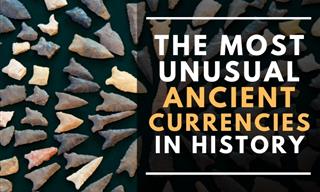
12 Unusual Ancient Currencies You Probably Never Hear Of!
With no credit cards and cash around, what did the people of the past use to buy things? It turns out that the list of objects used as ancient currencies is quite surprising!

The Extraordinary Origins of 10 Common English Words
In this article, we uncover the extraordinary etymology of 10 common English words, including ‘daisy’, ‘eavesdropper’, and ‘vaccine’.

Get Lost in These 15 Surreal Optical Illusions!
After looking at these weird optical illusions you might never trust your eyes again.
 59:00
59:00
The History Behind Halloween Isn't Quite What You Think...
If you've ever wondered what the origin of Halloween is and what all the fuss about pumpkins, fancy dress, and trick-or-treating is all about, then you should definitely give this documentary a watch.

1925: World Events That Made the News a Century Ago
Let's jump back in time and revisit the major events that captured the world's attention exactly a hundred years ago.
 4:13
4:13
This is What Happened to the Man Who Didn't Salute Hitler!
Nearly eight decades have passed since a camera captured the moment a man refused to give Hitler a Nazi salute. Here's what happened to him.

Do You Know The Origins of These Common Phrases?
There are many phrases that we use in English that we never give a second thought to. Here are 9 common phrases with rather sinister origins.
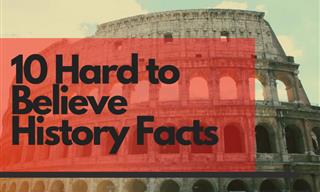
10 Historical Facts That Are Really Hard to Believe
Here, we share 10 fascinating and unbelievable history facts and stories like the time when forks were sacrilegious and pineapples had a higher price than gold

The Most Famous Acts of Revenge in History
Each of these 5 stories reveals how far people have gone to right perceived wrongs – changing the world around them, for better or worse, in their relentless pursuit of retribution.

Do You Know What All These Acronyms Stand For?
There are many famous acronyms around, but do you know what they stand for? Here are 21 acronyms you've always wondered about.
 14:05
14:05
What Was 1900 Like? See it All Here in Color!
Carefully restored and colorized, these scenes blend history with a fresh perspective.
 8:57
8:57
What Features Are Missing From the English Language?
English is incredible, but what can it learn from other languages? What features do English speakers miss out on?

12 Genius Ancient Chinese Inventions We Use to This Today
In this article, we'll focus on 12 surprising everyday items we all use that got their start many centuries ago in Ancient China...

20 Mind-Blowing Facts That Sound Completely Made Up
You won't believe how crazy these crazy facts are.

Ancient Love Stories: The Most Iconic Historical Romances
The pages of history are crammed with some remarkable stories about love. Let's explore some of the greatest ones ever told.
 4:10
4:10
It's Time to Learn All About Ancient Mesopotamia
Learn all about Ancient Mesopotamia, once known as the 'land between two rivers,' in this informative video.

Real-Life Superheroes: Their Stories Will Amaze You
These real-life superheroes deserve recognition!

5 Ways Learning a New Language Benefits Your Brain
It turns out that knowing more than one language has a variety of positive effects on our brain

18 Fun Facts You Likely Never Heard of Cutely Illustrated
Don't the cute exterior of these illustrations deceive you. This is a real treasure trove of fascinating facts about the world we live in

These Inventors Absolutely Hate Their Creations
These 7 inventions became world famous and even world changing... yet their inventors deeply regret them.

Let’s Learn About 7 of the Longest Words!
Did you know that the longest word to appear in literature clocks at a staggering 183 letters? Find out about more such longest words.

10 of the OLDEST Perfumes in the World
Here's a list of 10 perfumes on the scale from vintage to antique you can still buy today WITHOUT breaking the bank!

The 7 Most Popular Books Ever Sold
In this article, we set aside the Bible and focus on seven other books – from novels to reference works – that have achieved extraordinary global popularity.
 1:40
1:40
The Man Who Saved 669 Children
Sir Nicholas Winton organised the rescue and passage to Britain of about 669, Czechoslovakian children, mostly Jewish, destined for the Nazi death camps before World War II in an operation known as the Czech Kindertransport. This video is the BBC Pro

10 Words We Use Every Day That Shakespeare Made Popular
Shakespeare is believed to have invented 1,700 words, but these 10 should be taken off the list, as he didn't invent, but popularized them.
 18:31
18:31
The Most Beautiful Asian Royal Crowns
This video will show you 10 famous crowns from Asia and their fascinating histories.

This Could’ve Been the Worst Nuclear Catastrophe in the US
In 1961, the US avoided a major nuclear disaster thanks to sheer luck...

Wow! These People Had Someone Looking Over Them!
These lucky people had some guardian angel looking over them that day!

Discover What These Famous People Had to Say
Famous people, in addition to leaving us with their contributions to the world, also left us with many great quotes. Here are 20 quotes from famous people.

14 Famous Disappearances That Still Baffle Investigators
These fanous disappearances haunt our collective imagination.
 19:11
19:11
18 Things You Probably Didn't Know About Medieval Times
Watch Medieval Literature Dr. Dorsey Armstrong answer all the important questions related to the Middle Ages.
 2:45
2:45
The Evolution of Wedding Cakes Over the Past Century
Like anything else, the aesthetic of weddings is subject to fashion and change. And what better way to showcase this fashion than through wedding cakes?
 26:11
26:11
Watch This Man Trying Five Star Hotels... For DOGS
re these doggie hotels worth the price? Watch the video to find out.

These Lesser-Known History Facts Are Rather Surprising
Whether you're an avid historian or a bit of a novice to the subject, I'm sure that you will find these 10 facts rather surprising.
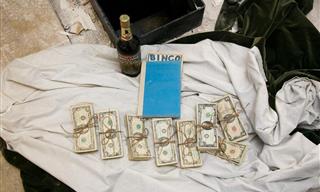
8 Shocking Items Unearthed During a Home Renovation
If you’re planning a home renovation, be prepared for the unexpected, as you may dig up some pretty surprising things, like the people in these 8 cool stories
 9:25
9:25
According to the CIA, This Is How Disguises REALLY Work
Ever wondered how spies and intelligence agencies manage to make their disguises look so utterly convincing? Find out here.
To enable your Ad-Free Subscription, please fill the fields below
Your subscription was successful, now you can enjoy an ad-free experience!! Note: To make sure you get no ads, please make sure to log in to your account. If you are logged in already, then refresh the page. The subscription can be cancelled at any time.


